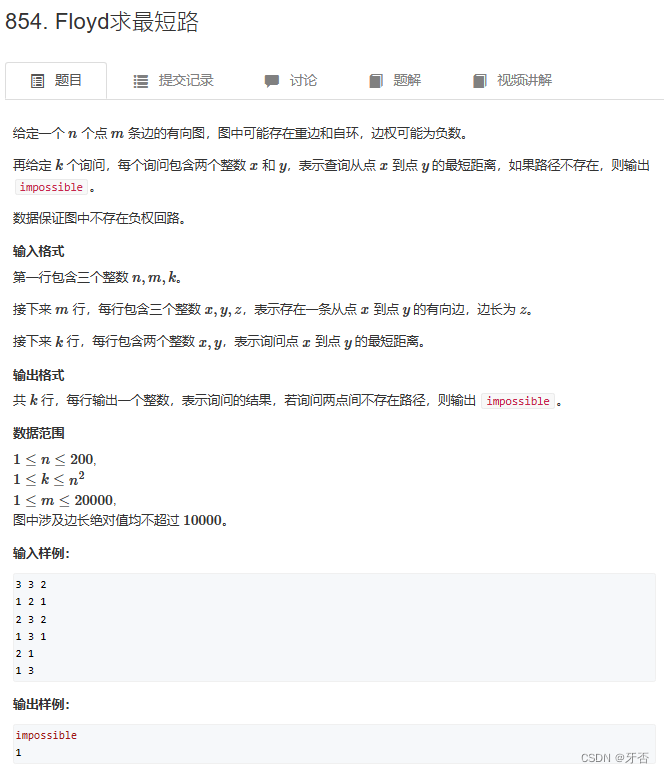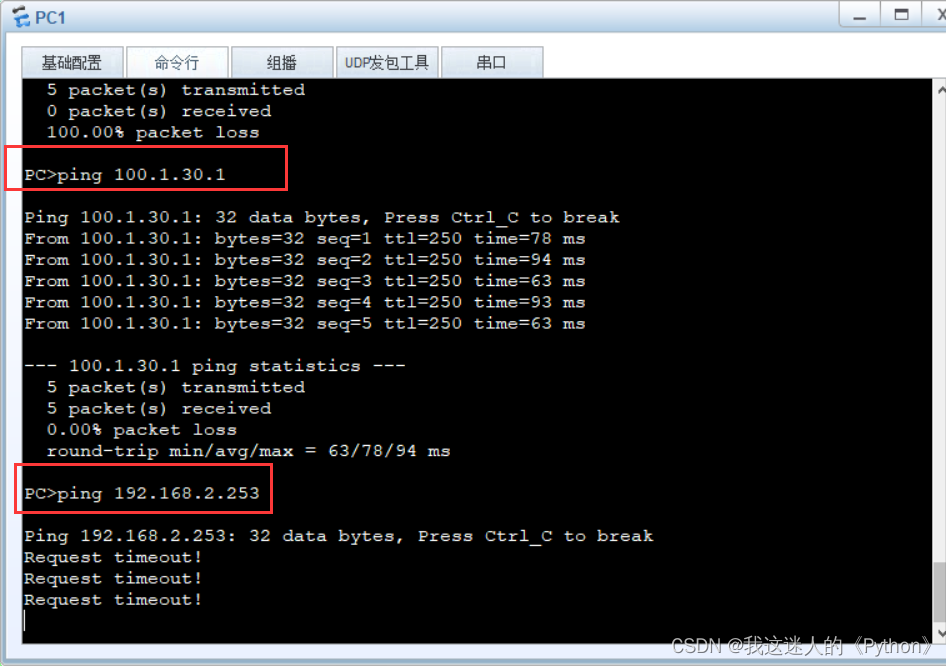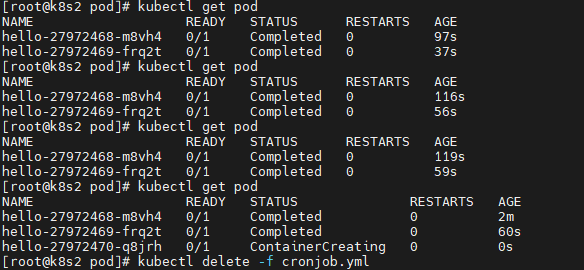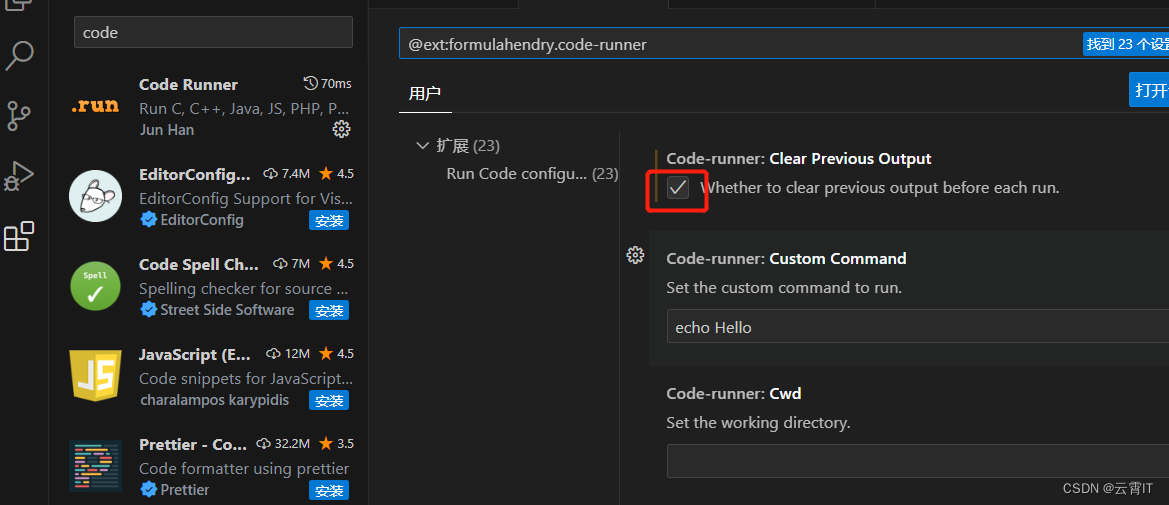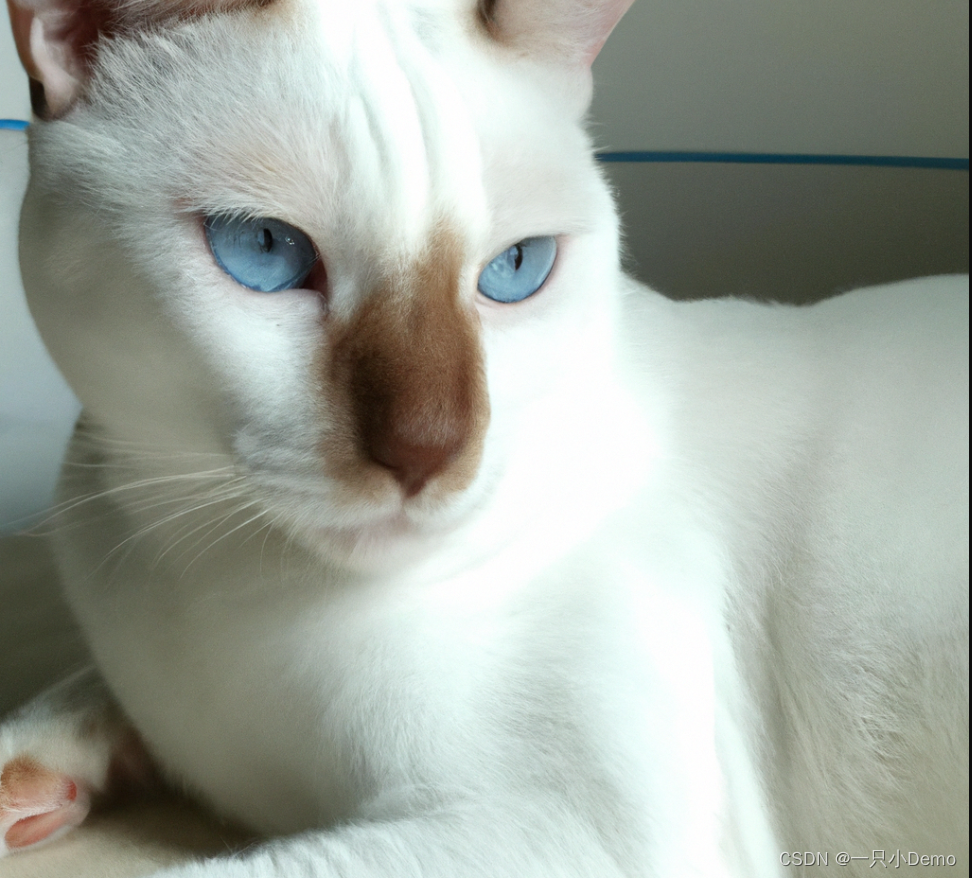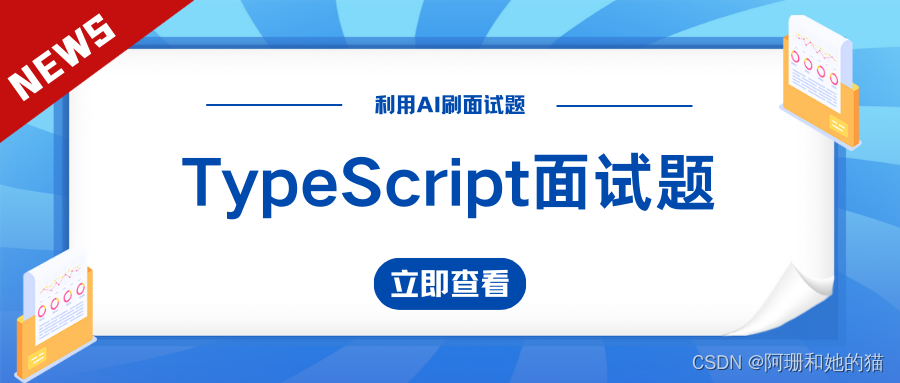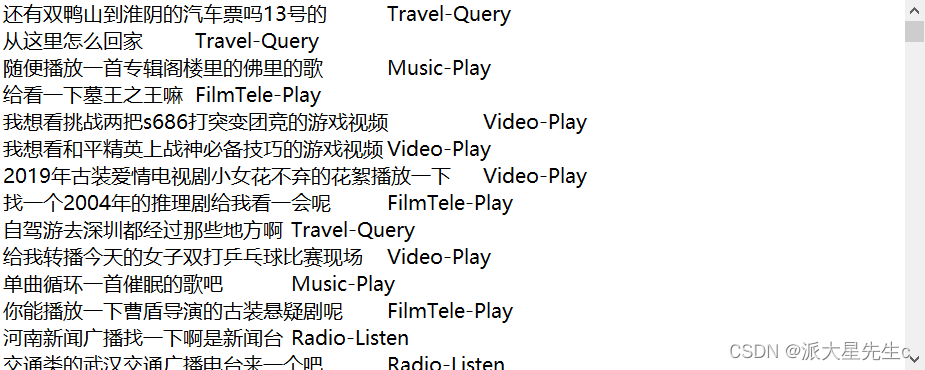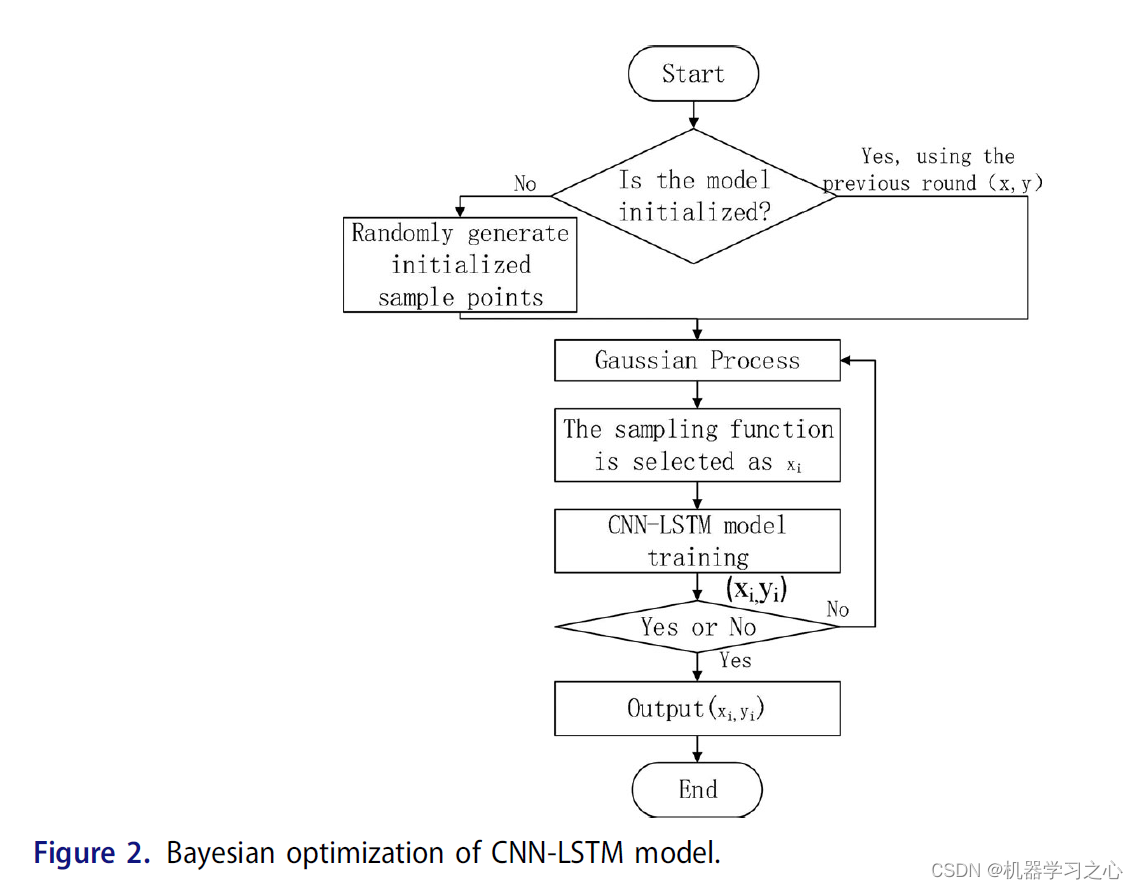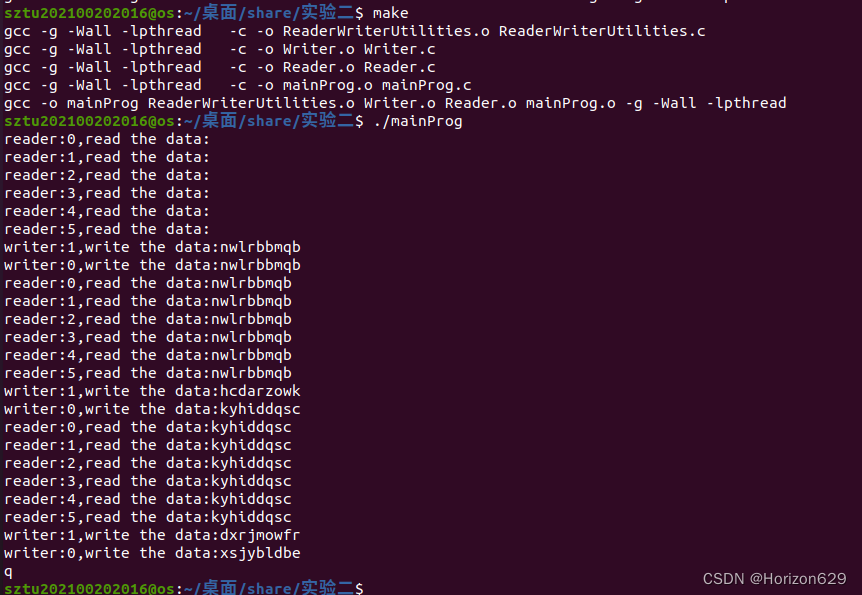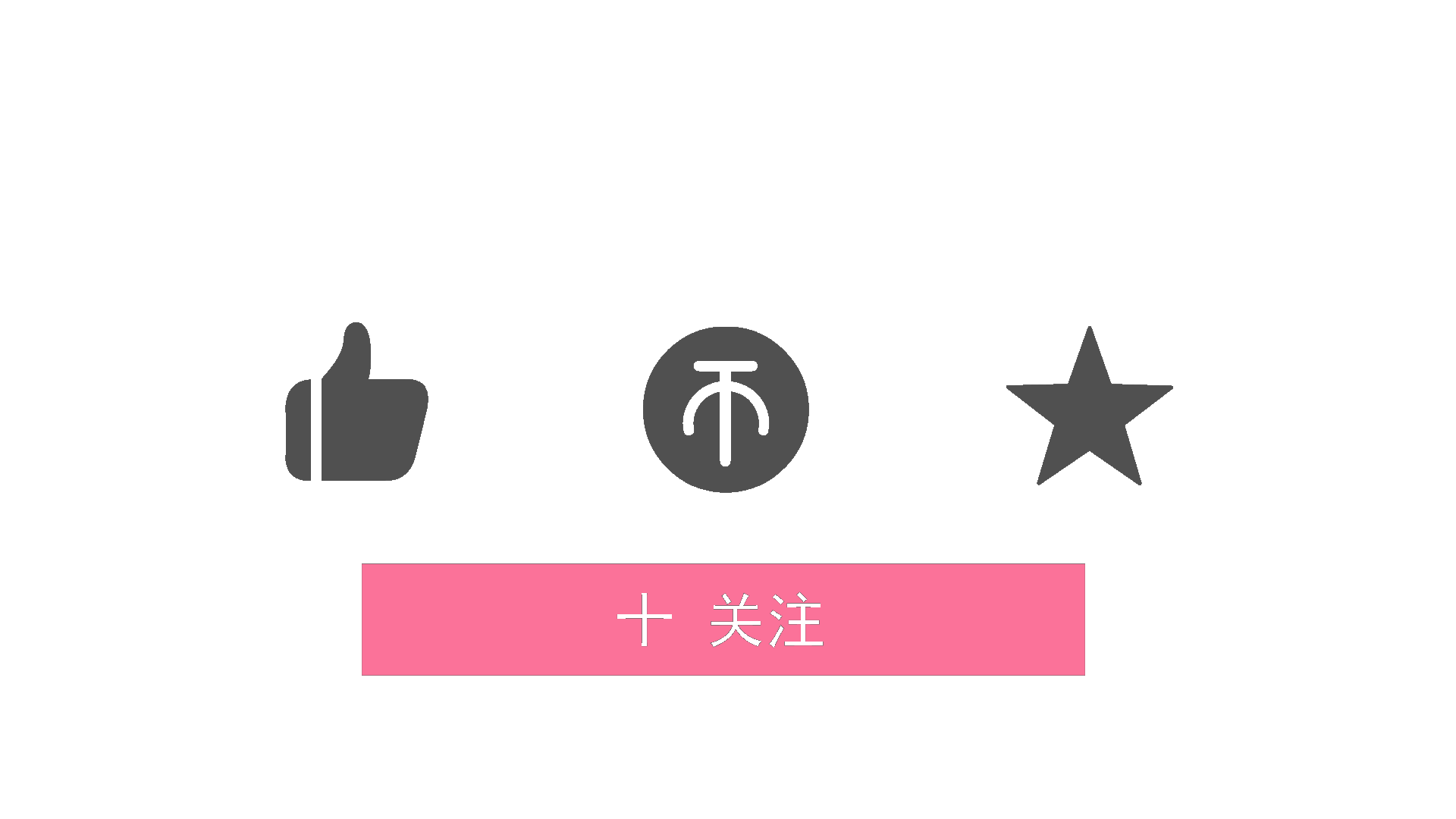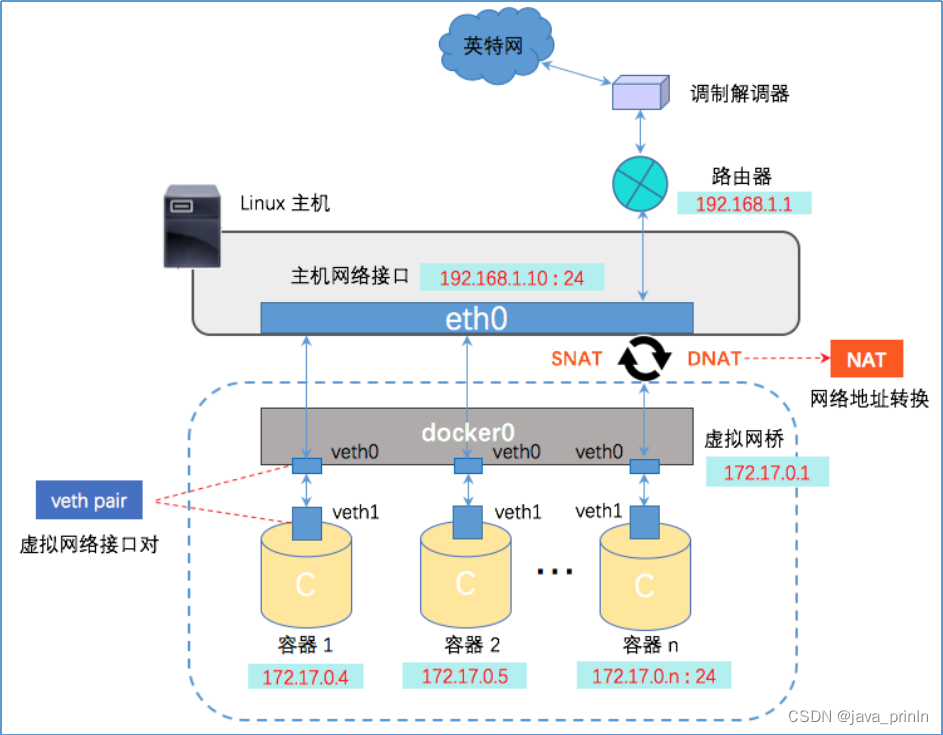运行效果

源代码
着色器
渲染物体的顶点着色器:
#version 330 core
// 传入局部坐标下的顶点坐标
layout( location = 0 ) in vec3 position;
layout (location = 1) in vec2 texCoords;
// 传入变换矩阵
uniform mat4 model;
uniform mat4 view;
uniform mat4 projection;
out vec2 TexCoords;
void main()
{
gl_Position = projection * view * model * vec4(position, 1.0f);
TexCoords = texCoords;
}
渲染物体的片段着色器:
#version 330 core
in vec2 TexCoords;
out vec4 color;
uniform sampler2D texture_diffuse1;
void main()
{
color = texture(texture_diffuse1, TexCoords);
}
渲染天空盒的顶点着色器:
#version 330 core
layout (location = 0) in vec3 position;
out vec3 TexCoords;
uniform mat4 projection;
uniform mat4 view;
void main()
{
gl_Position = projection * view * vec4(position, 1.0);
TexCoords = position;
}
渲染天空盒的片段着色器:
#version 330 core
in vec3 TexCoords;
out vec4 color;
uniform samplerCube skybox;
void main()
{
color = texture(skybox, TexCoords);
}
主程序
// Std. Includes
#include <string>
#include <algorithm>
using namespace std;
// GLEW
#define GLEW_STATIC
#include <GL/glew.h>
// GLFW
#include <GLFW/glfw3.h>
// GL includes
#include "Shader.h"
#include "Camera.h"
#include "Model.h"
// GLM Mathemtics
#include <glm/glm.hpp>
#include <glm/gtc/matrix_transform.hpp>
#include <glm/gtc/type_ptr.hpp>
// Other Libs
#include <SOIL.h>
// Properties
GLuint screenWidth = 800, screenHeight = 600;
// Function prototypes
void key_callback(GLFWwindow* window, int key, int scancode, int action, int mode);
void scroll_callback(GLFWwindow* window, double xoffset, double yoffset);
void mouse_callback(GLFWwindow* window, double xpos, double ypos);
void Do_Movement();
GLuint loadTexture(const GLchar* path);
GLuint loadCubemap(vector<const GLchar*> faces);
// Camera
Camera camera(glm::vec3(0.0f, 0.0f, 3.0f));
bool keys[1024];
GLfloat lastX = 400, lastY = 300;
bool firstMouse = true;
GLfloat deltaTime = 0.0f;
GLfloat lastFrame = 0.0f;
// The MAIN function, from here we start our application and run our Game loop
int main()
{
// Init GLFW
glfwInit();
glfwWindowHint(GLFW_CONTEXT_VERSION_MAJOR, 3);
glfwWindowHint(GLFW_CONTEXT_VERSION_MINOR, 3);
glfwWindowHint(GLFW_OPENGL_PROFILE, GLFW_OPENGL_CORE_PROFILE);
glfwWindowHint(GLFW_RESIZABLE, GL_FALSE);
GLFWwindow* window = glfwCreateWindow(screenWidth, screenHeight, "LearnOpenGL", nullptr, nullptr); // Windowed
glfwMakeContextCurrent(window);
// Set the required callback functions
glfwSetKeyCallback(window, key_callback);
glfwSetCursorPosCallback(window, mouse_callback);
glfwSetScrollCallback(window, scroll_callback);
// Options
glfwSetInputMode(window, GLFW_CURSOR, GLFW_CURSOR_DISABLED);
// Initialize GLEW to setup the OpenGL Function pointers
glewExperimental = GL_TRUE;
glewInit();
// Define the viewport dimensions
glViewport(0, 0, screenWidth, screenHeight);
// Setup some OpenGL options
glEnable(GL_DEPTH_TEST);
glDepthFunc(GL_LESS);
// 着色器(渲染物体和天空盒)
Shader shader("C:\\Users\\32156\\source\\repos\\LearnOpenGL\\Shader\\vertexShader.txt", "C:\\Users\\32156\\source\\repos\\LearnOpenGL\\Shader\\fragmentShader.txt");
Shader skyboxShader("C:\\Users\\32156\\source\\repos\\LearnOpenGL\\Shader\\skyboxVertexShader.txt", "C:\\Users\\32156\\source\\repos\\LearnOpenGL\\Shader\\skyboxFragmentShader.txt");
#pragma region "object_initialization"
// Set the object data (buffers, vertex attributes)
GLfloat cubeVertices[] = {
// Positions // Texture Coords
-0.5f, -0.5f, -0.5f, 0.0f, 0.0f,
0.5f, -0.5f, -0.5f, 1.0f, 0.0f,
0.5f, 0.5f, -0.5f, 1.0f, 1.0f,
0.5f, 0.5f, -0.5f, 1.0f, 1.0f,
-0.5f, 0.5f, -0.5f, 0.0f, 1.0f,
-0.5f, -0.5f, -0.5f, 0.0f, 0.0f,
-0.5f, -0.5f, 0.5f, 0.0f, 0.0f,
0.5f, -0.5f, 0.5f, 1.0f, 0.0f,
0.5f, 0.5f, 0.5f, 1.0f, 1.0f,
0.5f, 0.5f, 0.5f, 1.0f, 1.0f,
-0.5f, 0.5f, 0.5f, 0.0f, 1.0f,
-0.5f, -0.5f, 0.5f, 0.0f, 0.0f,
-0.5f, 0.5f, 0.5f, 1.0f, 0.0f,
-0.5f, 0.5f, -0.5f, 1.0f, 1.0f,
-0.5f, -0.5f, -0.5f, 0.0f, 1.0f,
-0.5f, -0.5f, -0.5f, 0.0f, 1.0f,
-0.5f, -0.5f, 0.5f, 0.0f, 0.0f,
-0.5f, 0.5f, 0.5f, 1.0f, 0.0f,
0.5f, 0.5f, 0.5f, 1.0f, 0.0f,
0.5f, 0.5f, -0.5f, 1.0f, 1.0f,
0.5f, -0.5f, -0.5f, 0.0f, 1.0f,
0.5f, -0.5f, -0.5f, 0.0f, 1.0f,
0.5f, -0.5f, 0.5f, 0.0f, 0.0f,
0.5f, 0.5f, 0.5f, 1.0f, 0.0f,
-0.5f, -0.5f, -0.5f, 0.0f, 1.0f,
0.5f, -0.5f, -0.5f, 1.0f, 1.0f,
0.5f, -0.5f, 0.5f, 1.0f, 0.0f,
0.5f, -0.5f, 0.5f, 1.0f, 0.0f,
-0.5f, -0.5f, 0.5f, 0.0f, 0.0f,
-0.5f, -0.5f, -0.5f, 0.0f, 1.0f,
-0.5f, 0.5f, -0.5f, 0.0f, 1.0f,
0.5f, 0.5f, -0.5f, 1.0f, 1.0f,
0.5f, 0.5f, 0.5f, 1.0f, 0.0f,
0.5f, 0.5f, 0.5f, 1.0f, 0.0f,
-0.5f, 0.5f, 0.5f, 0.0f, 0.0f,
-0.5f, 0.5f, -0.5f, 0.0f, 1.0f
};
GLfloat skyboxVertices[] = {
// Positions
-1.0f, 1.0f, -1.0f,
-1.0f, -1.0f, -1.0f,
1.0f, -1.0f, -1.0f,
1.0f, -1.0f, -1.0f,
1.0f, 1.0f, -1.0f,
-1.0f, 1.0f, -1.0f,
-1.0f, -1.0f, 1.0f,
-1.0f, -1.0f, -1.0f,
-1.0f, 1.0f, -1.0f,
-1.0f, 1.0f, -1.0f,
-1.0f, 1.0f, 1.0f,
-1.0f, -1.0f, 1.0f,
1.0f, -1.0f, -1.0f,
1.0f, -1.0f, 1.0f,
1.0f, 1.0f, 1.0f,
1.0f, 1.0f, 1.0f,
1.0f, 1.0f, -1.0f,
1.0f, -1.0f, -1.0f,
-1.0f, -1.0f, 1.0f,
-1.0f, 1.0f, 1.0f,
1.0f, 1.0f, 1.0f,
1.0f, 1.0f, 1.0f,
1.0f, -1.0f, 1.0f,
-1.0f, -1.0f, 1.0f,
-1.0f, 1.0f, -1.0f,
1.0f, 1.0f, -1.0f,
1.0f, 1.0f, 1.0f,
1.0f, 1.0f, 1.0f,
-1.0f, 1.0f, 1.0f,
-1.0f, 1.0f, -1.0f,
-1.0f, -1.0f, -1.0f,
-1.0f, -1.0f, 1.0f,
1.0f, -1.0f, -1.0f,
1.0f, -1.0f, -1.0f,
-1.0f, -1.0f, 1.0f,
1.0f, -1.0f, 1.0f
};
// Setup cube VAO
GLuint cubeVAO, cubeVBO;
glGenVertexArrays(1, &cubeVAO);
glGenBuffers(1, &cubeVBO);
glBindVertexArray(cubeVAO);
glBindBuffer(GL_ARRAY_BUFFER, cubeVBO);
glBufferData(GL_ARRAY_BUFFER, sizeof(cubeVertices), &cubeVertices, GL_STATIC_DRAW);
glEnableVertexAttribArray(0);
glVertexAttribPointer(0, 3, GL_FLOAT, GL_FALSE, 5 * sizeof(GLfloat), (GLvoid*)0);
glEnableVertexAttribArray(1);
glVertexAttribPointer(1, 2, GL_FLOAT, GL_FALSE, 5 * sizeof(GLfloat), (GLvoid*)(3 * sizeof(GLfloat)));
glBindVertexArray(0);
// Setup skybox VAO
GLuint skyboxVAO, skyboxVBO;
glGenVertexArrays(1, &skyboxVAO);
glGenBuffers(1, &skyboxVBO);
glBindVertexArray(skyboxVAO);
glBindBuffer(GL_ARRAY_BUFFER, skyboxVBO);
glBufferData(GL_ARRAY_BUFFER, sizeof(skyboxVertices), &skyboxVertices, GL_STATIC_DRAW);
glEnableVertexAttribArray(0);
glVertexAttribPointer(0, 3, GL_FLOAT, GL_FALSE, 3 * sizeof(GLfloat), (GLvoid*)0);
glBindVertexArray(0);
// Load textures
GLuint cubeTexture = loadTexture("C:\\Users\\32156\\source\\repos\\LearnOpenGL\\Resource\\container.jpg");
#pragma endregion
// 立方体贴图 (天空盒)
vector<const GLchar*> faces;// 右左上下前后
faces.push_back("C:\\Users\\32156\\source\\repos\\LearnOpenGL\\Resource\\skyBox\\15\\right.jpg");
faces.push_back("C:\\Users\\32156\\source\\repos\\LearnOpenGL\\Resource\\skyBox\\15\\left.jpg");
faces.push_back("C:\\Users\\32156\\source\\repos\\LearnOpenGL\\Resource\\skyBox\\15\\top.jpg");
faces.push_back("C:\\Users\\32156\\source\\repos\\LearnOpenGL\\Resource\\skyBox\\15\\bottom.jpg");
faces.push_back("C:\\Users\\32156\\source\\repos\\LearnOpenGL\\Resource\\skyBox\\15\\front.jpg");
faces.push_back("C:\\Users\\32156\\source\\repos\\LearnOpenGL\\Resource\\skyBox\\15\\back.jpg");
// 创建并加载立方体贴图
GLuint cubemapTexture = loadCubemap(faces);
// Draw as wireframe
//glPolygonMode(GL_FRONT_AND_BACK, GL_LINE);
// Game loop
while (!glfwWindowShouldClose(window))
{
// Set frame time
GLfloat currentFrame = glfwGetTime();
deltaTime = currentFrame - lastFrame;
lastFrame = currentFrame;
// Check and call events
glfwPollEvents();
Do_Movement();
// Clear buffers
glClearColor(0.1f, 0.1f, 0.1f, 1.0f);
glClear(GL_COLOR_BUFFER_BIT | GL_DEPTH_BUFFER_BIT);
// 关闭深度缓冲渲染
glDepthMask(GL_FALSE);// 关闭深度缓冲读写
// 使用着色器渲染天空盒
skyboxShader.Use();
glm::mat4 view = glm::mat4(glm::mat3(camera.GetViewMatrix())); // 移除观察矩阵的位移部分
glm::mat4 projection = glm::perspective(camera.Zoom, (float)screenWidth / (float)screenHeight, 0.1f, 100.0f);
glUniformMatrix4fv(glGetUniformLocation(skyboxShader.Program, "view"), 1, GL_FALSE, glm::value_ptr(view));
glUniformMatrix4fv(glGetUniformLocation(skyboxShader.Program, "projection"), 1, GL_FALSE, glm::value_ptr(projection));
// 绑定VAO、激活纹理单元、传入立方体贴图、绑定立方体贴图对象
glBindVertexArray(skyboxVAO);
glActiveTexture(GL_TEXTURE0);
glUniform1i(glGetUniformLocation(shader.Program, "skybox"), 0);
glBindTexture(GL_TEXTURE_CUBE_MAP, cubemapTexture);
// 绘制天空盒
glDrawArrays(GL_TRIANGLES, 0, 36);
glBindVertexArray(0);
glDepthMask(GL_TRUE);
// 绘制场景中的物体
shader.Use();
glm::mat4 model = glm::mat4(1.0f);
view = camera.GetViewMatrix();
glUniformMatrix4fv(glGetUniformLocation(shader.Program, "model"), 1, GL_FALSE, glm::value_ptr(model));
glUniformMatrix4fv(glGetUniformLocation(shader.Program, "view"), 1, GL_FALSE, glm::value_ptr(view));
glUniformMatrix4fv(glGetUniformLocation(shader.Program, "projection"), 1, GL_FALSE, glm::value_ptr(projection));
// Cubes
glBindVertexArray(cubeVAO);
glActiveTexture(GL_TEXTURE0);
glUniform1i(glGetUniformLocation(shader.Program, "texture_diffuse1"), 0);
glBindTexture(GL_TEXTURE_2D, cubeTexture);
glDrawArrays(GL_TRIANGLES, 0, 36);
glBindVertexArray(0);
// Swap the buffers
glfwSwapBuffers(window);
}
glfwTerminate();
return 0;
}
// Loads a cubemap texture from 6 individual texture faces
// Order should be:
// +X (right)
// -X (left)
// +Y (top)
// -Y (bottom)
// +Z (front)
// -Z (back)
// 创建并加载立方体贴图
GLuint loadCubemap(vector<const GLchar*> faces)
{
GLuint textureID;
glGenTextures(1, &textureID);
int width, height;
unsigned char* image;
// 将纹理绑定到立方体贴图纹理类型
glBindTexture(GL_TEXTURE_CUBE_MAP, textureID);
for (GLuint i = 0; i < faces.size(); i++)
{
// 依次加载纹理(顺序:右左上下前后)
image = SOIL_load_image(faces[i], &width, &height, 0, SOIL_LOAD_RGB);
glTexImage2D(GL_TEXTURE_CUBE_MAP_POSITIVE_X + i, 0, GL_RGB, width, height, 0, GL_RGB, GL_UNSIGNED_BYTE, image);
SOIL_free_image_data(image);
}
// 设置立方体贴图纹理的环绕和过滤方式
glTexParameteri(GL_TEXTURE_CUBE_MAP, GL_TEXTURE_MAG_FILTER, GL_LINEAR);
glTexParameteri(GL_TEXTURE_CUBE_MAP, GL_TEXTURE_MIN_FILTER, GL_LINEAR);
glTexParameteri(GL_TEXTURE_CUBE_MAP, GL_TEXTURE_WRAP_S, GL_CLAMP_TO_EDGE);
glTexParameteri(GL_TEXTURE_CUBE_MAP, GL_TEXTURE_WRAP_T, GL_CLAMP_TO_EDGE);
glTexParameteri(GL_TEXTURE_CUBE_MAP, GL_TEXTURE_WRAP_R, GL_CLAMP_TO_EDGE);
// 解绑立方体贴图
glBindTexture(GL_TEXTURE_CUBE_MAP, 0);
return textureID;
}
// This function loads a texture from file. Note: texture loading functions like these are usually
// managed by a 'Resource Manager' that manages all resources (like textures, models, audio).
// For learning purposes we'll just define it as a utility function.
GLuint loadTexture(const GLchar* path)
{
//Generate texture ID and load texture data
GLuint textureID;
glGenTextures(1, &textureID);
int width, height;
unsigned char* image = SOIL_load_image(path, &width, &height, 0, SOIL_LOAD_RGB);
// Assign texture to ID
glBindTexture(GL_TEXTURE_2D, textureID);
glTexImage2D(GL_TEXTURE_2D, 0, GL_RGB, width, height, 0, GL_RGB, GL_UNSIGNED_BYTE, image);
glGenerateMipmap(GL_TEXTURE_2D);
// Parameters
glTexParameteri(GL_TEXTURE_2D, GL_TEXTURE_WRAP_S, GL_REPEAT);
glTexParameteri(GL_TEXTURE_2D, GL_TEXTURE_WRAP_T, GL_REPEAT);
glTexParameteri(GL_TEXTURE_2D, GL_TEXTURE_MIN_FILTER, GL_LINEAR_MIPMAP_LINEAR);
glTexParameteri(GL_TEXTURE_2D, GL_TEXTURE_MAG_FILTER, GL_LINEAR);
glBindTexture(GL_TEXTURE_2D, 0);
SOIL_free_image_data(image);
return textureID;
}
#pragma region "User input"
// Moves/alters the camera positions based on user input
void Do_Movement()
{
// Camera controls
if (keys[GLFW_KEY_W])
camera.ProcessKeyboard(FORWARD, deltaTime);
if (keys[GLFW_KEY_S])
camera.ProcessKeyboard(BACKWARD, deltaTime);
if (keys[GLFW_KEY_A])
camera.ProcessKeyboard(LEFT, deltaTime);
if (keys[GLFW_KEY_D])
camera.ProcessKeyboard(RIGHT, deltaTime);
}
// Is called whenever a key is pressed/released via GLFW
void key_callback(GLFWwindow* window, int key, int scancode, int action, int mode)
{
if (key == GLFW_KEY_ESCAPE && action == GLFW_PRESS)
glfwSetWindowShouldClose(window, GL_TRUE);
if (action == GLFW_PRESS)
keys[key] = true;
else if (action == GLFW_RELEASE)
keys[key] = false;
}
void mouse_callback(GLFWwindow* window, double xpos, double ypos)
{
if (firstMouse)
{
lastX = xpos;
lastY = ypos;
firstMouse = false;
}
GLfloat xoffset = xpos - lastX;
GLfloat yoffset = lastY - ypos;
lastX = xpos;
lastY = ypos;
camera.ProcessMouseMovement(xoffset, yoffset);
}
void scroll_callback(GLFWwindow* window, double xoffset, double yoffset)
{
camera.ProcessMouseScroll(yoffset);
}
#pragma endregion
优化
如果先渲染天空盒再渲染物体,由于场景中天空盒很多的片段可能被物体遮挡,但先渲染天空盒会对天空盒的所有片段执行片段着色器,这样会造成性能的浪费。如果我们先渲染物体,然后只渲染天空盒没有被遮挡的部分,那么会得到优化,如何渲染天空盒没有被遮挡的部分呢?
透视除法在顶点着色器之后执行,即把gl_Position的xyz除以w元素。我们需要使得天空盒在执行透视除法后z元素为1,因此我们在天空盒的顶点着色器中执行:gl_Position = pos.xyww。pos是顶点在裁剪空间的位置。代码如下:
void main()
{
vec4 pos = projection * view * vec4(position, 1.0);
gl_Position = pos.xyww;
TexCoords = position;
}
fragment可以使用前置深度测试(early depth testing)简单地被丢弃,这样就节省了我们宝贵的带宽。
所以最后渲染天空盒就能够给我们带来轻微的性能提升。
运行结果:

主程序核心代码:
while (!glfwWindowShouldClose(window))
{
// Set frame time
GLfloat currentFrame = glfwGetTime();
deltaTime = currentFrame - lastFrame;
lastFrame = currentFrame;
// Check and call events
glfwPollEvents();
Do_Movement();
// Clear buffers
glClearColor(0.1f, 0.1f, 0.1f, 1.0f);
glClear(GL_COLOR_BUFFER_BIT | GL_DEPTH_BUFFER_BIT);
// Draw scene as normal
shader.Use();
glm::mat4 model = glm::mat4(1.0f);
glm::mat4 view = camera.GetViewMatrix();
glm::mat4 projection = glm::perspective(camera.Zoom, (float)screenWidth / (float)screenHeight, 0.1f, 100.0f);
glUniformMatrix4fv(glGetUniformLocation(shader.Program, "model"), 1, GL_FALSE, glm::value_ptr(model));
glUniformMatrix4fv(glGetUniformLocation(shader.Program, "view"), 1, GL_FALSE, glm::value_ptr(view));
glUniformMatrix4fv(glGetUniformLocation(shader.Program, "projection"), 1, GL_FALSE, glm::value_ptr(projection));
// Cubes
glBindVertexArray(cubeVAO);
glActiveTexture(GL_TEXTURE0);
glUniform1i(glGetUniformLocation(shader.Program, "texture_diffuse1"), 0);
glBindTexture(GL_TEXTURE_2D, cubeTexture);
glDrawArrays(GL_TRIANGLES, 0, 36);
glBindVertexArray(0);
// Draw skybox as last
glDepthFunc(GL_LEQUAL); // Change depth function so depth test passes when values are equal to depth buffer's content
skyboxShader.Use();
view = glm::mat4(glm::mat3(camera.GetViewMatrix())); // Remove any translation component of the view matrix
glUniformMatrix4fv(glGetUniformLocation(skyboxShader.Program, "view"), 1, GL_FALSE, glm::value_ptr(view));
glUniformMatrix4fv(glGetUniformLocation(skyboxShader.Program, "projection"), 1, GL_FALSE, glm::value_ptr(projection));
// skybox cube
glBindVertexArray(skyboxVAO);
glActiveTexture(GL_TEXTURE0);
glUniform1i(glGetUniformLocation(shader.Program, "skybox"), 0);
glBindTexture(GL_TEXTURE_CUBE_MAP, cubemapTexture);
glDrawArrays(GL_TRIANGLES, 0, 36);
glBindVertexArray(0);
glDepthFunc(GL_LESS); // Set depth function back to default
// Swap the buffers
glfwSwapBuffers(window);
}
环境映射
&emspl;我们现在有了一个把整个环境映射到为一个单独纹理的对象,我们利用这个信息能做的不仅是天空盒。使用带有场景环境的立方体贴图,我们还可以让物体有一个反射或折射属性。像这样使用了环境立方体贴图的技术叫做环境贴图技术,其中最重要的两个是反射(reflection)和折射(refraction)。
反射

运行效果:
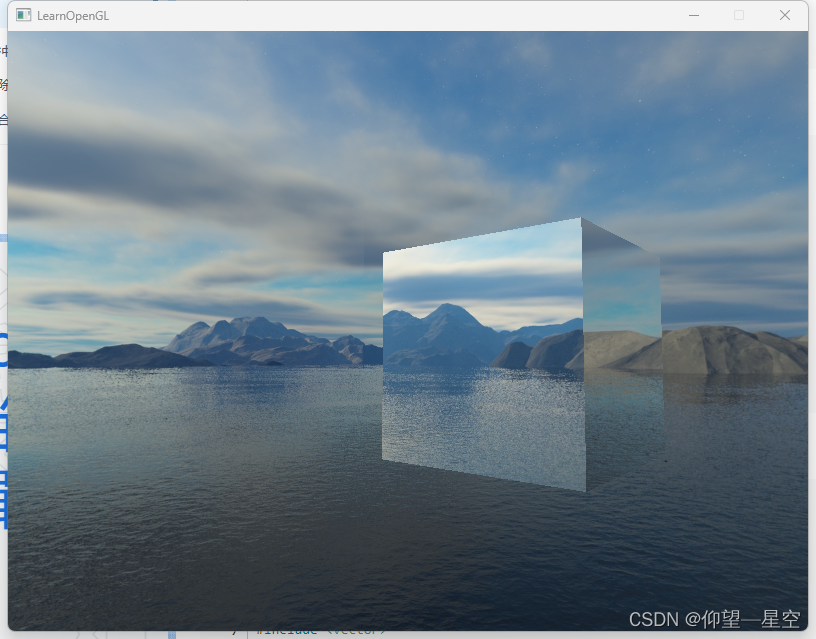
物体的顶点着色器:
#version 330 core
layout (location = 0) in vec3 position;
layout (location = 1) in vec3 normal;
out vec3 Normal;
out vec3 Position;
uniform mat4 model;
uniform mat4 view;
uniform mat4 projection;
void main()
{
gl_Position = projection * view * model * vec4(position, 1.0f);
Normal = mat3(transpose(inverse(model))) * normal;
Position = vec3(model * vec4(position, 1.0f));
}
物体的片段着色器:
#version 330 core
in vec3 Normal;
in vec3 Position;
out vec4 color;
uniform vec3 cameraPos;
uniform samplerCube skybox;
void main()
{
vec3 I = normalize(Position - cameraPos);
vec3 R = reflect(I, normalize(Normal));
color = texture(skybox, R);
}
主程序核心代码:
shader.Use();
glm::mat4 model = glm::mat4(1.0f);
glm::mat4 view = camera.GetViewMatrix();
glm::mat4 projection = glm::perspective(camera.Zoom, (float)screenWidth / (float)screenHeight, 0.1f, 100.0f);
glUniformMatrix4fv(glGetUniformLocation(shader.Program, "model"), 1, GL_FALSE, glm::value_ptr(model));
glUniformMatrix4fv(glGetUniformLocation(shader.Program, "view"), 1, GL_FALSE, glm::value_ptr(view));
glUniformMatrix4fv(glGetUniformLocation(shader.Program, "projection"), 1, GL_FALSE, glm::value_ptr(projection));
glUniform3f(glGetUniformLocation(shader.Program, "cameraPos"), camera.Position.x, camera.Position.y, camera.Position.z);
// Cubes
glBindVertexArray(cubeVAO);
glBindTexture(GL_TEXTURE_CUBE_MAP, skyboxTexture);
glDrawArrays(GL_TRIANGLES, 0, 36);
glBindVertexArray(0);
在天空盒场景中渲染模型:
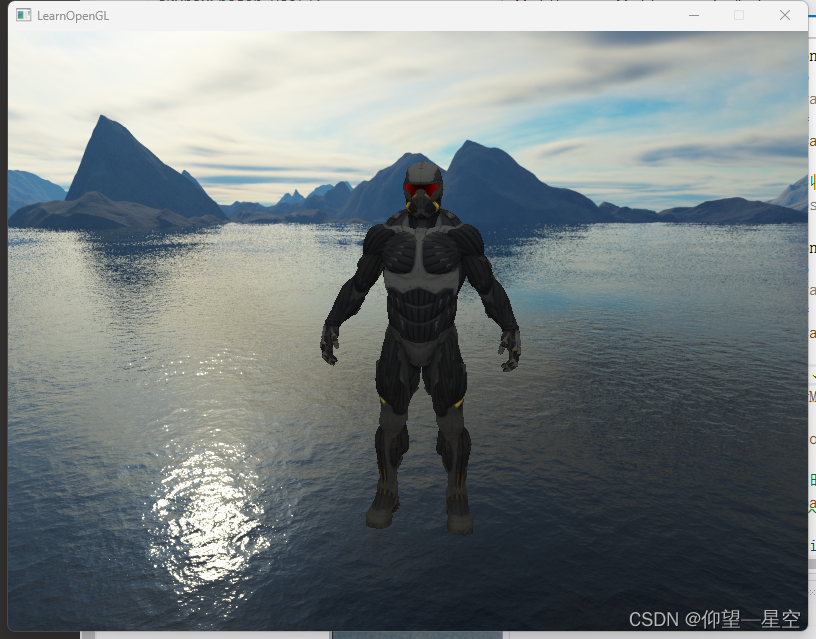
核心代码:
Model ourModel("D:\\Download\\nanosuit\\nanosuit.obj");
// Draw as wireframe
//glPolygonMode(GL_FRONT_AND_BACK, GL_LINE);
// Game loop
while (!glfwWindowShouldClose(window))
{
GLfloat currentFrame = glfwGetTime();
deltaTime = currentFrame - lastFrame;
lastFrame = currentFrame;
// Check and call events
glfwPollEvents();
Do_Movement();
// Clear buffers
glClearColor(0.1f, 0.1f, 0.1f, 1.0f);
glClear(GL_COLOR_BUFFER_BIT | GL_DEPTH_BUFFER_BIT);
// 使用着色器程序
shader.Use();
// 计算各种变换矩阵
glm::mat4 view = camera.GetViewMatrix();
glm::mat4 projection = glm::perspective(camera.Zoom, (float)screenWidth / (float)screenHeight, 0.1f, 100.0f);
glUniformMatrix4fv(glGetUniformLocation(shader.Program, "projection"), 1, GL_FALSE, glm::value_ptr(projection));
glUniformMatrix4fv(glGetUniformLocation(shader.Program, "view"), 1, GL_FALSE, glm::value_ptr(view));
// 传入着色器变换矩阵
glm::mat4 model = glm::mat4(1.0f);
model = glm::translate(model, glm::vec3(0.0f, -1.75f, 0.0f)); // Translate it down a bit so it's at the center of the scene
model = glm::scale(model, glm::vec3(0.2f, 0.2f, 0.2f)); // It's a bit too big for our scene, so scale it down
glUniformMatrix4fv(glGetUniformLocation(shader.Program, "model"), 1, GL_FALSE, glm::value_ptr(model));
// 使用着色器渲染模型
ourModel.Draw(shader);
// Draw skybox as last
glDepthFunc(GL_LEQUAL); // Change depth function so depth test passes when values are equal to depth buffer's content
skyboxShader.Use();
view = glm::mat4(glm::mat3(camera.GetViewMatrix())); // Remove any translation component of the view matrix
glUniformMatrix4fv(glGetUniformLocation(skyboxShader.Program, "view"), 1, GL_FALSE, glm::value_ptr(view));
glUniformMatrix4fv(glGetUniformLocation(skyboxShader.Program, "projection"), 1, GL_FALSE, glm::value_ptr(projection));
// skybox cube0
glBindVertexArray(skyboxVAO);
glActiveTexture(GL_TEXTURE0);
glUniform1i(glGetUniformLocation(skyboxShader.Program, "skybox"), 0);
glBindTexture(GL_TEXTURE_CUBE_MAP, skyboxTexture);
glDrawArrays(GL_TRIANGLES, 0, 36);
glBindVertexArray(0);
glDepthFunc(GL_LESS); // Set depth function back to default
GLuint errorCode = glGetError();
if (errorCode)
std::cout << errorCode << std::endl;
// Swap the buffers
glfwSwapBuffers(window);
}
反射贴图:

折射


运行结果:
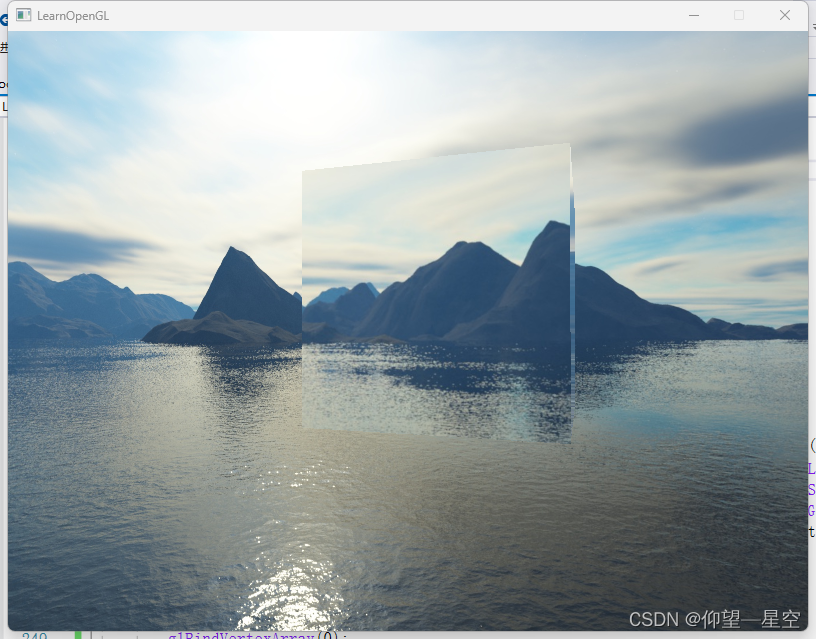
动态环境贴图
现在,我们已经使用了静态图像组合的天空盒,看起来不错,但是没有考虑到物体可能移动的实际场景。我们到现在还没注意到这点,是因为我们目前还只使用了一个物体。如果我们有个镜子一样的物体,它周围有多个物体,只有天空盒在镜子中可见,和场景中只有这一个物体一样。
使用帧缓冲可以为提到的物体的所有6个不同角度创建一个场景的纹理,把它们每次渲染迭代储存为一个立方体贴图。之后我们可以使用这个(动态生成的)立方体贴图来创建真实的反射和折射表面,这样就能包含所有其他物体了。这种方法叫做动态环境映射(Dynamic Environment Mapping),因为我们动态地创建了一个物体的以其四周为参考的立方体贴图,并把它用作环境贴图。
它看起效果很好,但是有一个劣势:使用环境贴图我们必须为每个物体渲染场景6次,这需要非常大的开销。现代应用尝试尽量使用天空盒子,凡可能预编译立方体贴图就创建少量动态环境贴图。动态环境映射是个非常棒的技术,要想在不降低执行效率的情况下实现它就需要很多巧妙的技巧。
练习

运行效果:

源代码
物体顶点着色器:
#version 330 core
// 模型的顶点、法向量、纹理坐标(局部坐标系)
layout (location = 0) in vec3 position;
layout (location = 1) in vec3 normal;
layout (location = 2) in vec2 texCoords;
// 模型顶点的世界法向量、世界坐标、纹理坐标
out vec3 Normal;
out vec3 Position;
out vec2 TexCoords;
// 变换矩阵
uniform mat4 model;
uniform mat4 view;
uniform mat4 projection;
void main()
{
gl_Position = projection * view * model * vec4(position, 1.0f);
// 计算世界法向量、坐标
Normal = mat3(transpose(inverse(model))) * normal;
Position = vec3(model * vec4(position, 1.0f));
TexCoords = texCoords;
}
物体片段着色器:
#version 330 core
// 世界法向量、坐标、纹理
in vec3 Normal;
in vec3 Position;
in vec2 TexCoords;
// 摄像机坐标、漫反射贴图、反射贴图、天空盒贴图
uniform vec3 cameraPos;
uniform sampler2D texture_diffuse1;
uniform sampler2D texture_reflection1;
uniform samplerCube skybox;
out vec4 color;
void main()
{
// 计算漫反射
vec4 diffuse_color = texture(texture_diffuse1, TexCoords);
// 计算反射
vec3 I = normalize(Position - cameraPos);
vec3 R = reflect(I, normalize(Normal));
float reflect_intensity = texture(texture_reflection1, TexCoords).r;
vec4 reflect_color;
if(reflect_intensity > 0.1) // Only sample reflections when above a certain treshold
reflect_color = texture(skybox, R) * reflect_intensity;
// 得到最终颜色
color = diffuse_color + reflect_color;
}
天空盒顶点着色器:
#version 330 core
layout (location = 0) in vec3 position;
out vec3 TexCoords;
uniform mat4 projection;
uniform mat4 view;
void main()
{
vec4 pos = projection * view * vec4(position, 1.0f);
gl_Position = pos.xyww;
TexCoords = position;
}
天空盒片段着色器:
#version 330 core
in vec3 TexCoords;
out vec4 color;
uniform samplerCube skybox;
void main()
{
color = texture(skybox, TexCoords);
}
主程序:
// Std. Includes
#include <string>
#include <algorithm>
using namespace std;
// GLEW
#define GLEW_STATIC
#include <GL/glew.h>
// GLFW
#include <GLFW/glfw3.h>
// GL includes
#include "Shader.h"
#include "Camera.h"
#include "Model.h"
// GLM Mathemtics
#include <glm/glm.hpp>
#include <glm/gtc/matrix_transform.hpp>
#include <glm/gtc/type_ptr.hpp>
// Other Libs
#include <SOIL.h>
// Properties
GLuint screenWidth = 800, screenHeight = 600;
// Function prototypes
void key_callback(GLFWwindow* window, int key, int scancode, int action, int mode);
void scroll_callback(GLFWwindow* window, double xoffset, double yoffset);
void mouse_callback(GLFWwindow* window, double xpos, double ypos);
void Do_Movement();
GLuint loadTexture(GLchar* path, GLboolean alpha = false);
GLuint loadCubemap(vector<const GLchar*> faces);
// Camera
Camera camera(glm::vec3(0.0f, 0.0f, 3.0f));
bool keys[1024];
GLfloat lastX = 400, lastY = 300;
bool firstMouse = true;
GLfloat deltaTime = 0.0f;
GLfloat lastFrame = 0.0f;
// The MAIN function, from here we start our application and run our Game loop
int main()
{
// Init GLFW
glfwInit();
glfwWindowHint(GLFW_CONTEXT_VERSION_MAJOR, 3);
glfwWindowHint(GLFW_CONTEXT_VERSION_MINOR, 3);
glfwWindowHint(GLFW_OPENGL_PROFILE, GLFW_OPENGL_CORE_PROFILE);
glfwWindowHint(GLFW_RESIZABLE, GL_FALSE);
GLFWwindow* window = glfwCreateWindow(screenWidth, screenHeight, "LearnOpenGL", nullptr, nullptr); // Windowed
glfwMakeContextCurrent(window);
// Set the required callback functions
glfwSetKeyCallback(window, key_callback);
glfwSetCursorPosCallback(window, mouse_callback);
glfwSetScrollCallback(window, scroll_callback);
// Options
glfwSetInputMode(window, GLFW_CURSOR, GLFW_CURSOR_DISABLED);
// Initialize GLEW to setup the OpenGL Function pointers
glewExperimental = GL_TRUE;
glewInit();
glGetError(); // Debug GLEW bug fix
// Define the viewport dimensions
glViewport(0, 0, screenWidth, screenHeight);
// Setup some OpenGL options
glEnable(GL_DEPTH_TEST);
glDepthFunc(GL_LESS);
// Setup and compile our shaders
Shader shader("C:\\Users\\32156\\source\\repos\\LearnOpenGL\\Shader\\vertexShader.txt", "C:\\Users\\32156\\source\\repos\\LearnOpenGL\\Shader\\fragmentShader.txt");
Shader skyboxShader("C:\\Users\\32156\\source\\repos\\LearnOpenGL\\Shader\\skyboxVertexShader.txt", "C:\\Users\\32156\\source\\repos\\LearnOpenGL\\Shader\\skyboxFragmentShader.txt");
#pragma region "object_initialization"
GLfloat skyboxVertices[] = {
// 天空盒立方体的顶点(也是纹理坐标)
-1.0f, 1.0f, -1.0f,
-1.0f, -1.0f, -1.0f,
1.0f, -1.0f, -1.0f,
1.0f, -1.0f, -1.0f,
1.0f, 1.0f, -1.0f,
-1.0f, 1.0f, -1.0f,
-1.0f, -1.0f, 1.0f,
-1.0f, -1.0f, -1.0f,
-1.0f, 1.0f, -1.0f,
-1.0f, 1.0f, -1.0f,
-1.0f, 1.0f, 1.0f,
-1.0f, -1.0f, 1.0f,
1.0f, -1.0f, -1.0f,
1.0f, -1.0f, 1.0f,
1.0f, 1.0f, 1.0f,
1.0f, 1.0f, 1.0f,
1.0f, 1.0f, -1.0f,
1.0f, -1.0f, -1.0f,
-1.0f, -1.0f, 1.0f,
-1.0f, 1.0f, 1.0f,
1.0f, 1.0f, 1.0f,
1.0f, 1.0f, 1.0f,
1.0f, -1.0f, 1.0f,
-1.0f, -1.0f, 1.0f,
-1.0f, 1.0f, -1.0f,
1.0f, 1.0f, -1.0f,
1.0f, 1.0f, 1.0f,
1.0f, 1.0f, 1.0f,
-1.0f, 1.0f, 1.0f,
-1.0f, 1.0f, -1.0f,
-1.0f, -1.0f, -1.0f,
-1.0f, -1.0f, 1.0f,
1.0f, -1.0f, -1.0f,
1.0f, -1.0f, -1.0f,
-1.0f, -1.0f, 1.0f,
1.0f, -1.0f, 1.0f
};
// 设置天空盒VAO (VAO和VBO申请、VAO和VBO绑定、传入VBO数据 启用顶点属性 设置数据解析方式、解绑VAO)
GLuint skyboxVAO, skyboxVBO;
glGenVertexArrays(1, &skyboxVAO);
glGenBuffers(1, &skyboxVBO);
glBindVertexArray(skyboxVAO);
glBindBuffer(GL_ARRAY_BUFFER, skyboxVBO);
glBufferData(GL_ARRAY_BUFFER, sizeof(skyboxVertices), &skyboxVertices, GL_STATIC_DRAW);
glEnableVertexAttribArray(0);
glVertexAttribPointer(0, 3, GL_FLOAT, GL_FALSE, 3 * sizeof(GLfloat), (GLvoid*)0);
glBindVertexArray(0);
#pragma endregion
// 设置立方体贴图数组、根据数组加载天空盒纹理
vector<const GLchar*> faces; // 右左上下前后
faces.push_back("C:\\Users\\32156\\source\\repos\\LearnOpenGL\\Resource\\skyBox\\15\\right.jpg");
faces.push_back("C:\\Users\\32156\\source\\repos\\LearnOpenGL\\Resource\\skyBox\\15\\left.jpg");
faces.push_back("C:\\Users\\32156\\source\\repos\\LearnOpenGL\\Resource\\skyBox\\15\\top.jpg");
faces.push_back("C:\\Users\\32156\\source\\repos\\LearnOpenGL\\Resource\\skyBox\\15\\bottom.jpg");
faces.push_back("C:\\Users\\32156\\source\\repos\\LearnOpenGL\\Resource\\skyBox\\15\\front.jpg");
faces.push_back("C:\\Users\\32156\\source\\repos\\LearnOpenGL\\Resource\\skyBox\\15\\back.jpg");
GLuint skyboxTexture = loadCubemap(faces);
// 加载模型
Model ourModel("D:\\Download\\nanosuit\\nanosuit.obj");
// Draw as wireframe
//glPolygonMode(GL_FRONT_AND_BACK, GL_LINE);
// Game loop
while (!glfwWindowShouldClose(window))
{
// Set frame time
GLfloat currentFrame = glfwGetTime();
deltaTime = currentFrame - lastFrame;
lastFrame = currentFrame;
// Check and call events
glfwPollEvents();
Do_Movement();
// Clear buffers
glClearColor(0.1f, 0.1f, 0.1f, 1.0f);
glClear(GL_COLOR_BUFFER_BIT | GL_DEPTH_BUFFER_BIT);
// Draw scene as normal
shader.Use();
glm::mat4 model = glm::mat4(1.0f);
model = glm::scale(model, glm::vec3(0.2f, 0.2f, 0.2f)); // It's a bit too big for our scene, so scale it down
glm::mat4 view = camera.GetViewMatrix();
glm::mat4 projection = glm::perspective(camera.Zoom, (float)screenWidth / (float)screenHeight, 0.1f, 100.0f);
glUniformMatrix4fv(glGetUniformLocation(shader.Program, "model"), 1, GL_FALSE, glm::value_ptr(model));
glUniformMatrix4fv(glGetUniformLocation(shader.Program, "view"), 1, GL_FALSE, glm::value_ptr(view));
glUniformMatrix4fv(glGetUniformLocation(shader.Program, "projection"), 1, GL_FALSE, glm::value_ptr(projection));
glUniform3f(glGetUniformLocation(shader.Program, "cameraPos"), camera.Position.x, camera.Position.y, camera.Position.z);
glActiveTexture(GL_TEXTURE3); // We already have 3 texture units active (in this shader) so set the skybox as the 4th texture unit (texture units are 0 based so index number 3)
glUniform1i(glGetUniformLocation(shader.Program, "skybox"), 3);
// Now draw the nanosuit
glBindTexture(GL_TEXTURE_CUBE_MAP, skyboxTexture);
ourModel.Draw(shader);
// Draw skybox as last
glDepthFunc(GL_LEQUAL); // Change depth function so depth test passes when values are equal to depth buffer's content
skyboxShader.Use();
view = glm::mat4(glm::mat3(camera.GetViewMatrix())); // Remove any translation component of the view matrix
glUniformMatrix4fv(glGetUniformLocation(skyboxShader.Program, "view"), 1, GL_FALSE, glm::value_ptr(view));
glUniformMatrix4fv(glGetUniformLocation(skyboxShader.Program, "projection"), 1, GL_FALSE, glm::value_ptr(projection));
// skybox cube
glBindVertexArray(skyboxVAO);
glActiveTexture(GL_TEXTURE0);
glUniform1i(glGetUniformLocation(shader.Program, "skybox"), 0);
glBindTexture(GL_TEXTURE_CUBE_MAP, skyboxTexture);
glDrawArrays(GL_TRIANGLES, 0, 36);
glBindVertexArray(0);
glDepthFunc(GL_LESS); // Set depth function back to default
// Swap the buffers
glfwSwapBuffers(window);
}
glfwTerminate();
return 0;
}
// Loads a cubemap texture from 6 individual texture faces
// Order should be:
// +X (right)
// -X (left)
// +Y (top)
// -Y (bottom)
// +Z (front)
// -Z (back)
GLuint loadCubemap(vector<const GLchar*> faces)
{
GLuint textureID;
glGenTextures(1, &textureID);
int width, height;
unsigned char* image;
glBindTexture(GL_TEXTURE_CUBE_MAP, textureID);
for (GLuint i = 0; i < faces.size(); i++)
{
image = SOIL_load_image(faces[i], &width, &height, 0, SOIL_LOAD_RGB);
glTexImage2D(GL_TEXTURE_CUBE_MAP_POSITIVE_X + i, 0, GL_RGB, width, height, 0, GL_RGB, GL_UNSIGNED_BYTE, image);
SOIL_free_image_data(image);
}
glTexParameteri(GL_TEXTURE_CUBE_MAP, GL_TEXTURE_MAG_FILTER, GL_LINEAR);
glTexParameteri(GL_TEXTURE_CUBE_MAP, GL_TEXTURE_MIN_FILTER, GL_LINEAR);
glTexParameteri(GL_TEXTURE_CUBE_MAP, GL_TEXTURE_WRAP_S, GL_CLAMP_TO_EDGE);
glTexParameteri(GL_TEXTURE_CUBE_MAP, GL_TEXTURE_WRAP_T, GL_CLAMP_TO_EDGE);
glTexParameteri(GL_TEXTURE_CUBE_MAP, GL_TEXTURE_WRAP_R, GL_CLAMP_TO_EDGE);
glBindTexture(GL_TEXTURE_CUBE_MAP, 0);
return textureID;
}
// This function loads a texture from file. Note: texture loading functions like these are usually
// managed by a 'Resource Manager' that manages all resources (like textures, models, audio).
// For learning purposes we'll just define it as a utility function.
GLuint loadTexture(GLchar* path)
{
//Generate texture ID and load texture data
GLuint textureID;
glGenTextures(1, &textureID);
int width, height;
unsigned char* image = SOIL_load_image(path, &width, &height, 0, SOIL_LOAD_RGB);
// Assign texture to ID
glBindTexture(GL_TEXTURE_2D, textureID);
glTexImage2D(GL_TEXTURE_2D, 0, GL_RGB, width, height, 0, GL_RGB, GL_UNSIGNED_BYTE, image);
glGenerateMipmap(GL_TEXTURE_2D);
// Parameters
glTexParameteri(GL_TEXTURE_2D, GL_TEXTURE_WRAP_S, GL_REPEAT);
glTexParameteri(GL_TEXTURE_2D, GL_TEXTURE_WRAP_T, GL_REPEAT);
glTexParameteri(GL_TEXTURE_2D, GL_TEXTURE_MIN_FILTER, GL_LINEAR_MIPMAP_LINEAR);
glTexParameteri(GL_TEXTURE_2D, GL_TEXTURE_MAG_FILTER, GL_LINEAR);
glBindTexture(GL_TEXTURE_2D, 0);
SOIL_free_image_data(image);
return textureID;
}
#pragma region "User input"
// Moves/alters the camera positions based on user input
void Do_Movement()
{
// Camera controls
if (keys[GLFW_KEY_W])
camera.ProcessKeyboard(FORWARD, deltaTime);
if (keys[GLFW_KEY_S])
camera.ProcessKeyboard(BACKWARD, deltaTime);
if (keys[GLFW_KEY_A])
camera.ProcessKeyboard(LEFT, deltaTime);
if (keys[GLFW_KEY_D])
camera.ProcessKeyboard(RIGHT, deltaTime);
}
// Is called whenever a key is pressed/released via GLFW
void key_callback(GLFWwindow* window, int key, int scancode, int action, int mode)
{
if (key == GLFW_KEY_ESCAPE && action == GLFW_PRESS)
glfwSetWindowShouldClose(window, GL_TRUE);
if (action == GLFW_PRESS)
keys[key] = true;
else if (action == GLFW_RELEASE)
keys[key] = false;
}
void mouse_callback(GLFWwindow* window, double xpos, double ypos)
{
if (firstMouse)
{
lastX = xpos;
lastY = ypos;
firstMouse = false;
}
GLfloat xoffset = xpos - lastX;
GLfloat yoffset = lastY - ypos;
lastX = xpos;
lastY = ypos;
camera.ProcessMouseMovement(xoffset, yoffset);
}
void scroll_callback(GLFWwindow* window, double xoffset, double yoffset)
{
camera.ProcessMouseScroll(yoffset);
}
#pragma endregion
